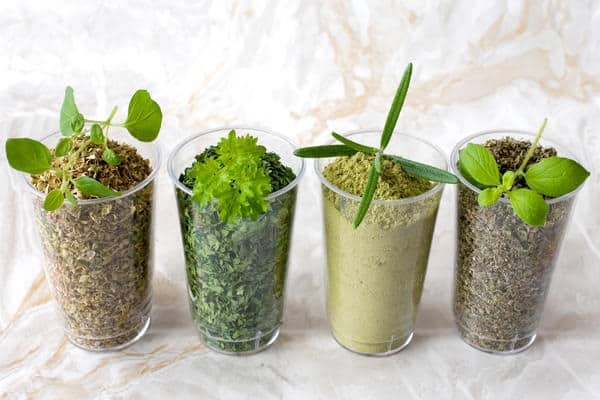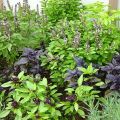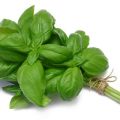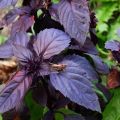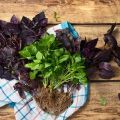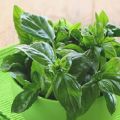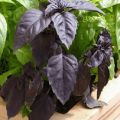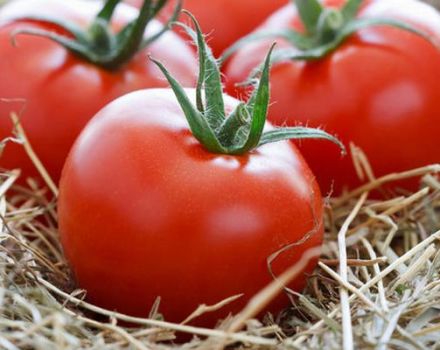Growing basil from seeds and care in the country in the open field
Fragrant and spicy basil, the cultivation of which does not present any particular difficulties, has been familiar to mankind for over 5 thousand years and is widely used both for culinary and medicinal purposes. The culture is unpretentious and decorative, it can be kept at home on the windowsill as a houseplant and fresh green spice. Grown on a personal plot or in a vegetable garden, basil will delight with a bountiful harvest all summer, if you follow the simple rules of agricultural technology.
Content
- 1 Acquaintance with basil: plant description
- 2 Seed sowing basil
- 3 When basil is sown: planting process
- 4 How to care for seedlings?
- 5 Planting seedlings in the ground
- 6 What should be the soil for planting basil?
- 7 How to plant seedlings correctly?
- 8 Basil care: features of growing an aromatic plant
- 9 Harvesting: How to Harvest Greens?
- 10 How to prepare basil?
Acquaintance with basil: plant description
Basil (Ocimum) is a fragrant annual herb belonging to the Lamiaceae family. Its name can be translated from Greek as "royal" or "royal". Among the wide variety of herbs and herbs, it occupies a dominant position.
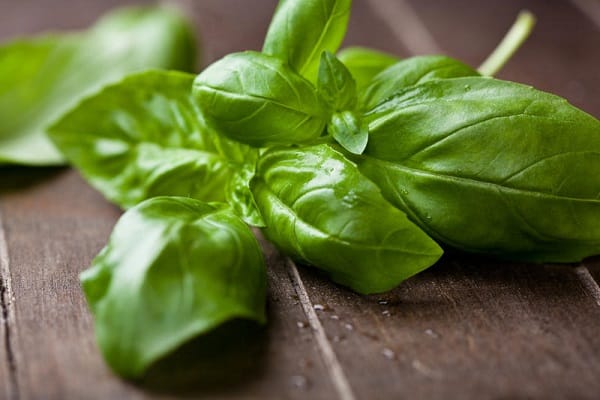
For growing basil in the open field, a variety of varieties of this culture are suitable, which differ not only in the color of the leaves, but also in taste. The ground part of the plant can be yellowish green, dark green and dark purple. The tetrahedral stems of this herb do not grow more than 0.3-0.6 m, covered with shiny and rough ovate-oblong leaves. The shoot ends in an inflorescence of several white or pinkish-purple buds.
Essential oils contained in fresh and dried herbs give dishes an exquisite and sophisticated, subtle flavor of allspice, delicate notes of spicy cloves and tart lemon aroma. The plant contains a rich set of nutrients (phytoncides, camphor, tannins), vitamins (E, A, C, PP, K, group B), minerals (potassium, manganese, iron, magnesium, copper, zinc, sodium, mercury and others).
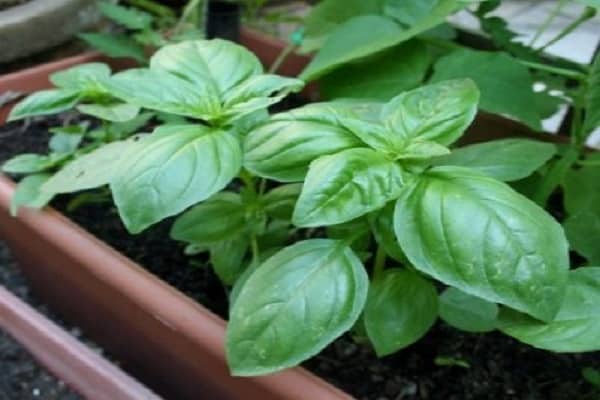
Seed sowing basil
Sowing basil can be carried out directly into open ground in a garden plot or previously in individual containers for seedlings, which move to the garden bed after the onset of stable heat. The seedling method allows you to get a harvest of fragrant greens much earlier. In addition, in the fall, the seeds have time to ripen, and they can be collected for sowing next year. This option is considered the most preferred when growing a crop, although with the first method, you can also collect a lot of aromatic herbs.
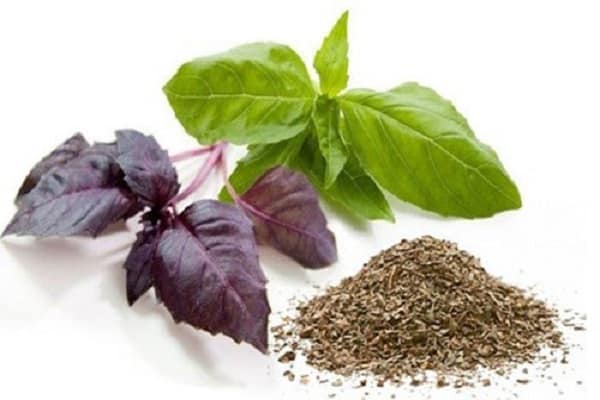
When basil is sown: planting process
Planting basil seedlings carried out approximately 55-60 days before the expected day of moving seedlings into open ground. It is recommended to do this in late March or early April. This time is enough for the full development of seedlings, it does not make sense to plant earlier. First, a soil mixture is prepared from equal parts of peat, garden soil and well-rotted humus. You can use the all-purpose garden formulas sold in stores.
The soil is poured into boxes or individual pots with the obligatory arrangement of a drainage layer with a thickness of at least 3-4 cm.
To accelerate germination, it is recommended to additionally fertilize the soil with a special mineral composition prepared from potassium chloride, urea, superphosphate and potassium sulfate (½ tsp per 5 liters of water). The soil in the box is sprayed with a saline solution and left to warm to room temperature for several hours. Seed material is prepared in advance. To do this, it is kept warm for about 2 weeks, and immediately before sowing, it is soaked for 9-10 hours in a solution of potassium permanganate or any growth stimulator (Zircon, Epin).
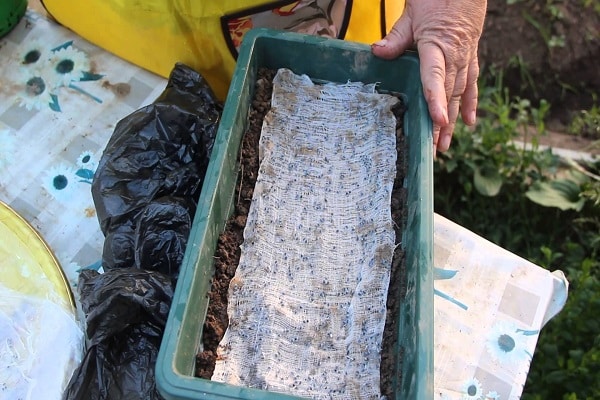
You need to sow basil using this technology:
- seeds are buried in the soil no deeper than 0.8-1 cm;
- gently watered with settled water at room temperature;
- the container is covered with glass or transparent plastic wrap and placed in a well-lit sunny place (windowsill) with a temperature of at least +23 ° C;
- when the first shoots appear (after 7-10 days), the temperature must be reduced to + 17 ... + 20 ° С so that the seedlings do not stretch out;
- when 2-4 full leaves appear, the seedlings can be dived into separate pots.
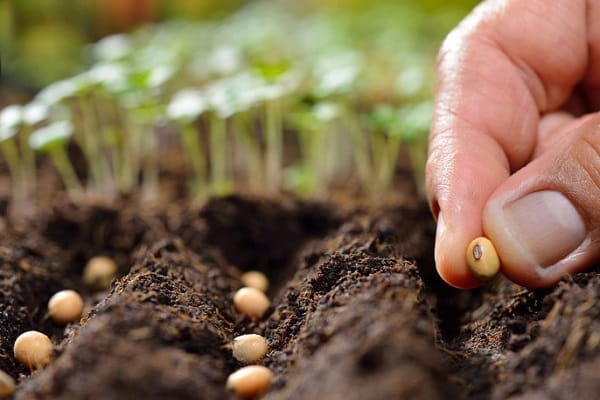
How to care for seedlings?
When grown from seed, basil requires the following conditions:
- Regular airing of seedlings. Shelter is removed daily for 10-15 minutes.
- Good lighting. Otherwise, the seedlings will stretch out and be stunted. They need to be turned periodically so that they do not grow lopsided. With a lack of light, the planting is supplemented with fluorescent or phytolamps.
- Watering. It is carried out carefully and carefully, only with warm water. Excessive waterlogging of the substrate can cause the development of a black leg, which will destroy the seedlings. If this happens, then you can spray the basil seedlings with a solution of urea (½ teaspoon per 1 liter of water).
- Loosening. Approximately every 10-14 days.
- Top dressing. After the appearance of 5 leaves, the seedling is pinched to increase bushiness. When the side shoots grow a little, the seedlings are fertilized with organic matter (humus, manure).
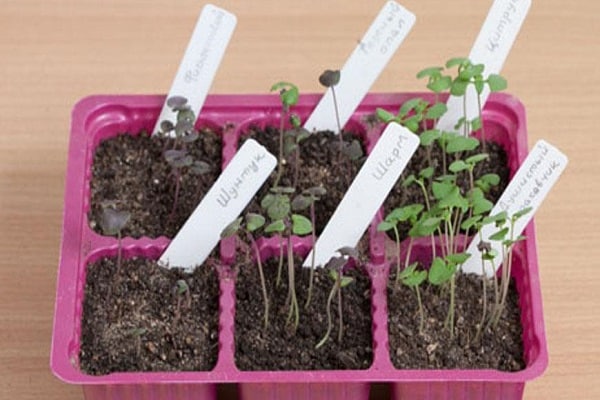
Planting seedlings in the ground
Planting of basil seedlings in open ground is carried out only when warm weather sets in and the soil warms up to + 15 ... + 17 ° С. In most regions, this time falls on the end of May or the first ten days of June. Experienced vegetable growers recommend starting hardening the seedlings about a week before the expected date.
For this, containers with plants are taken out and left outside for 15 minutes, gradually the time spent in the fresh air is increased to several hours. In order to get a good harvest of spicy greens, it is necessary to observe some conditions of agricultural technology.
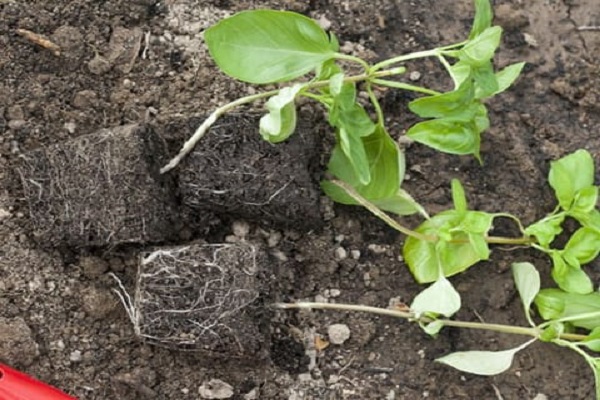
What should be the soil for planting basil?
For this spicy herb, illuminated sunny places on the site are chosen. But the culture does not tolerate cold winds and drafts, so it is advisable to plant seedlings under the protection of large trees and shrubs, as well as near fences and various buildings. Basil thrives on loose, fertile and well-drained light soils. The best precursors for it are cucumbers, tomatoes and legumes.
It is recommended to prepare the site for planting in the fall. When digging to a depth of at least 25-30 cm, the following fertilizers are applied per 1 m²:
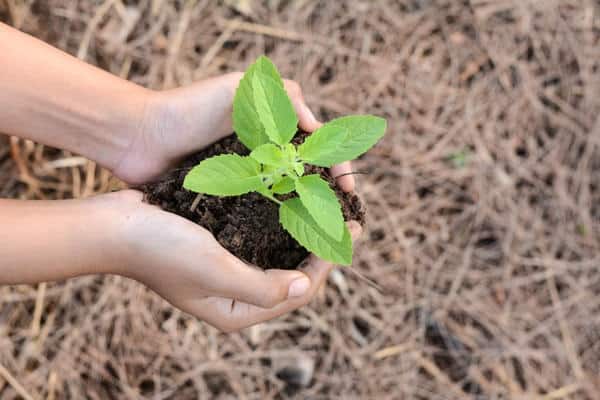
- humus or rotted compost - 3.5-50 kg (depending on the nutrient composition of the soil);
- granular superphosphate - 20-25 g;
- potassium sulfate - 10-12 g.
Immediately before planting, the soil is abundantly watered with a solution of fertilizers (½ teaspoon of potassium chloride, urea and potassium sulfate per ½ bucket of water).
If the selected area is in the lowland, then it is better to make the beds high and enclose them with boards or other material. Basil will not grow well on moist, waterlogged and airtight soils.
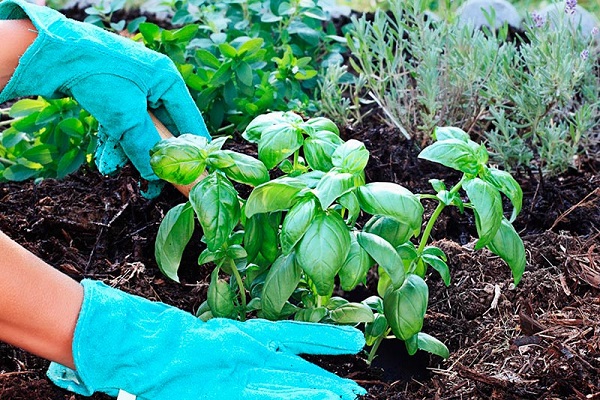
How to plant seedlings correctly?
It is best to plant seedlings on a cloudy and rainy day to avoid sunburn on delicate leaves. Digging holes 9-10 cm deep at a distance of 15-17 cm from each other, leave at least 25-30 cm between the rows, otherwise the bushes will be cramped. You need to pour water into the holes (at least 1 liter), then you can plant basil in the wet ground.
The soil around each plant is carefully compacted and watered again. The first time planting at night is covered with a film. When the seedlings take root well and start growing, the shelter is completely removed.
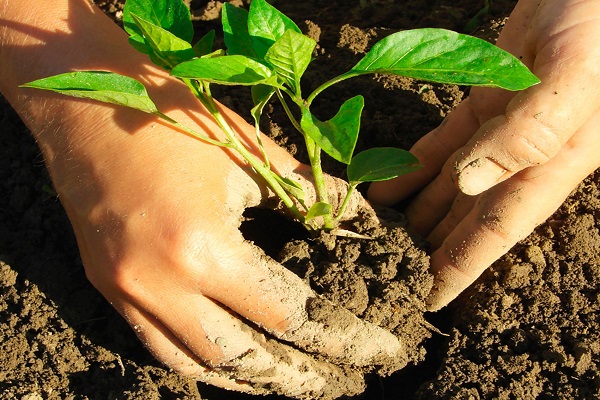
Basil care: features of growing an aromatic plant
Basil is a thermophilic plant, this should be taken into account when choosing a variety for planting. It must be adapted to the local climatic conditions. In the middle lane, it is recommended to grow this culture in a seedling way. The best varieties for this region are:
- Russian giant purple (clove-pepper).
- Dragon (clove-pepper).
- Peppery aroma (spicy peppery).
- Yerevan (pepper tea).
- Ararat (aniseed).
- Valya (clove).
- Greek (peppermint).
- Velvet (mint).
- Aniskin (anise).
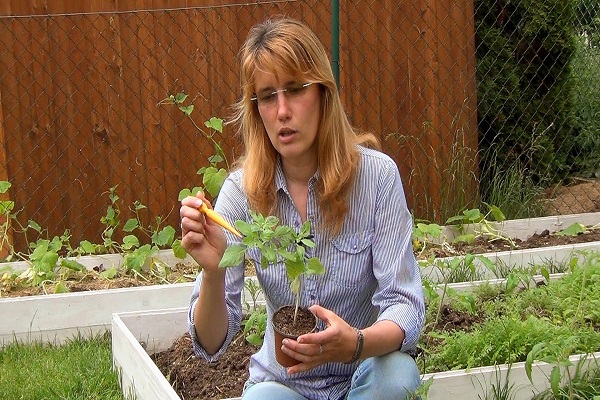
To grow basil, it is necessary to carry out competent care for it, which consists in timely regular watering, loosening the soil, weeding and feeding.
Watering and caring for the garden
For proper cultivation of basil, it is important to observe the watering regime. It is necessary to moisten the soil only after its top layer dries. Strong dampness can lead to rotting of the root system. It is recommended to water it after weeding and loosening, so that more air flows to the roots and moisture seeps out faster. It is imperative to remove weeds, since they take away nutrients from the cultivated plant and their powerful root system interferes with the growth of spicy grass. We water the ridges with extremely warm, settled water.

When do you need to feed a plant and how to do it?
To get a good and abundant increase in the green mass of aromatic basil, it is necessary to fertilize with fertilizers containing nitrogen. To do this, you can use a simple nitrofosky, diluting it in the following proportions: 2 tbsp. l. granules for 12 liters of water. You need to water each bush, the consumption is about 3-4 liters per 1 m² of plantings.
The first feeding is carried out in late June or early July, the second - after 3-4 weeks.
This herb is a disease-resistant crop. All diseases of the basil are associated with unfavorable weather conditions or mistakes in agricultural technology. With thickened plantings, low temperatures and excessive moisture, it can be affected by fusarois and gray rot. Diseased bushes are removed, and fresh ones are planted in their place.

As a prophylaxis and at the initial stages of the development of pathology, spraying with an infusion of onion husks (4 parts of water and 1 part of onion husks) is used. It is not recommended to plant this spice plant in one place for more than 2 years, as this increases the likelihood of infection with fungal infections (fusarium).
Basil insect pests are extremely rare, they are not attracted by the phytoncides contained in its leaves. Many gardeners even use this crop in mixed plantings to scare away aphids and spider mites from other crops.
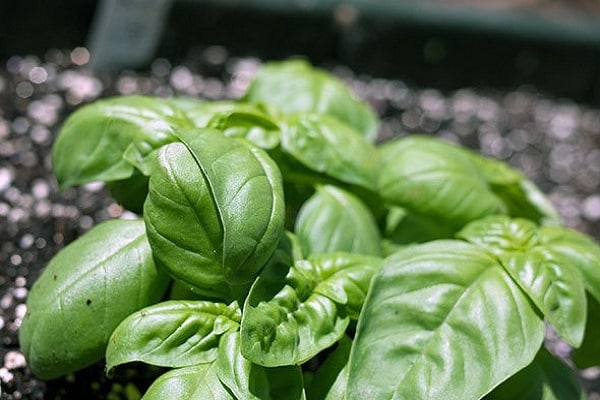
Harvesting: How to Harvest Greens?
The basil harvest can be carried out during the entire growing season. Single leaflets for eating can be torn off all the time. But you cannot completely bare the bush, as it will certainly die. After the beginning of flowering, the ground part loses its aroma and original rich taste, even becomes bitter. Therefore, flower brushes on specimens not intended for the subsequent production of seed material must be cut off.
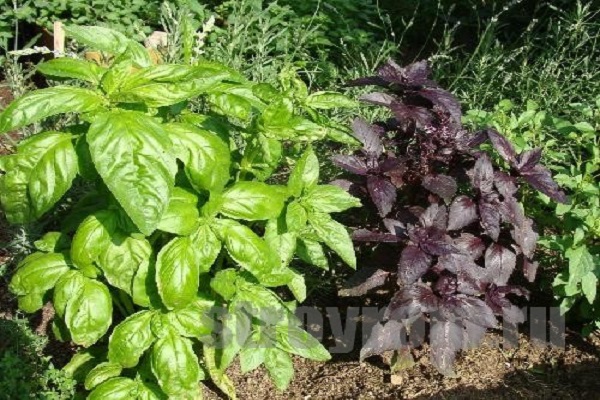
When and how is the cutoff done?
The basil is massively harvested twice a season:
- Before flowering (early July), as soon as the buds appear, the large grass is cut off. Collect only the upper part, leaving the lower branches.
- When the side shoots grow well on the bush, they can also be cut off. This occurs 4-5 weeks after the first harvest (early or mid-August).
For spicy greens all year round, several basil can be transplanted into flower pots and kept at home on the windowsill throughout the winter.
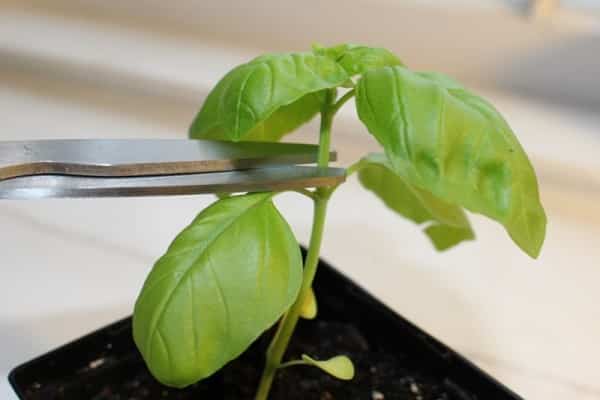
How to prepare basil?
To grow basil, a temperature of at least + 20 ... + 25 ° C is required, so at the end of August the bushes stop growing and useful greens must be harvested for the winter for storage. This is done in several ways:
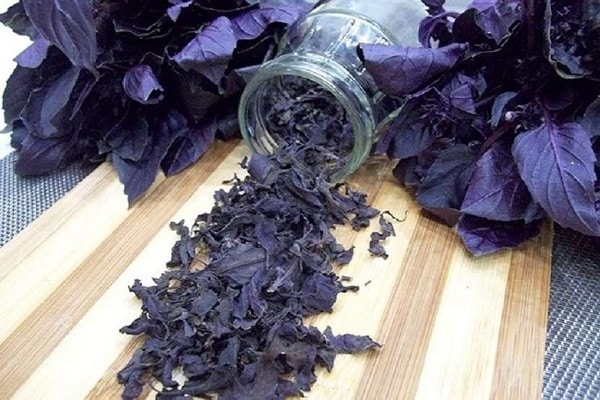
- Drying. Can be dried naturally, in which cut branches are crumbled in a thin layer and placed in a dry, well-ventilated place without direct sunlight. You can dry the herbs in the oven at about + 40 ° C or in the microwave. Store the dried spice in tightly closed glass or porcelain containers.
- Freezing. The green mass is crushed, frozen, then laid out in individual bags or plastic cans and stored in the freezer.
- Canning. There are many different recipes in which basil is salted and preserved. It can be used to make basil paste.
Drying is the most common way to harvest this herb. In this form, basil retains its original aroma for the longest time and a large amount of useful substances.
